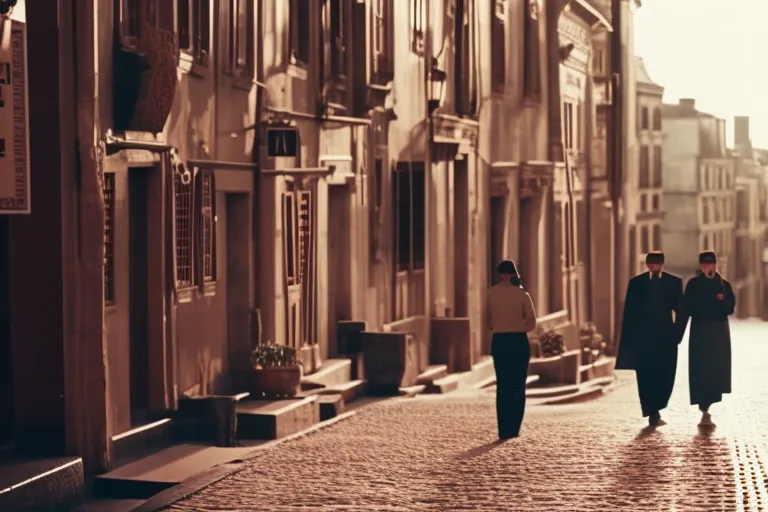If you're looking to explore Georgia's rich history, there's no better place to start than the ancient town of Mtskheta. This UNESCO World Heritage Site is located just 20 kilometers north of Tbilisi and is home to some of the country's most important religious and cultural landmarks.
The History of Mtskheta
Mtskheta has a long and fascinating history that dates back to the 1st millennium BC. It was the capital of the early Georgian Kingdom of Iberia and played a crucial role in the spread of Christianity throughout the region.
One of the most significant events in Mtskheta's history was the adoption of Christianity as the state religion in the 4th century AD. This event was marked by the construction of the Jvari Monastery, which still stands today as a testament to the town's religious heritage.
Over the centuries, Mtskheta was invaded and ruled by various empires, including the Persians, Arabs, Mongols, and Ottomans. Despite these invasions, the town managed to preserve its cultural and religious identity, making it a unique and important destination for travelers interested in history and culture.
What to See in Mtskheta
There are several must-see landmarks in Mtskheta that should be on every traveler's itinerary. Here are just a few:
Jvari Monastery
The Jvari Monastery is one of the most iconic landmarks in Georgia. It sits atop a hill overlooking the town and offers breathtaking views of the surrounding countryside. The monastery was built in the 6th century and is considered one of the finest examples of early Georgian architecture.
Legend has it that St. Nino, who brought Christianity to Georgia, erected a wooden cross on the hill where the monastery now stands. According to the legend, the cross miraculously cured a local pagan priest of an illness, leading to the conversion of the entire kingdom to Christianity.
Svetitskhoveli Cathedral
The Svetitskhoveli Cathedral is another important religious landmark in Mtskheta. It was built in the 11th century on the site of a 4th-century church and is considered one of the most sacred places in Georgia. The cathedral is home to the robe of Christ, which is said to have been brought to Mtskheta by a Georgian Jew after the crucifixion.
The cathedral's architecture is a blend of different styles, reflecting the various influences that shaped Georgia's history. The exterior is adorned with intricate carvings and frescoes, while the interior is decorated with beautiful mosaics and stained glass windows.
Samtavro Monastery
The Samtavro Monastery is a complex of buildings that includes a church, a bell tower, and a monastery. It was founded in the 11th century and is dedicated to St. Nino, who is credited with bringing Christianity to Georgia. The monastery is surrounded by beautiful gardens and is a peaceful place to spend an afternoon.
One of the most interesting features of the monastery is the grave of Mirian III, the king who adopted Christianity as the state religion. The grave is located in the church's crypt and is believed to have healing powers.
Armazi Fortress
The Armazi Fortress is an ancient citadel that dates back to the 3rd century BC. It was the capital of the early Georgian Kingdom of Iberia and played an important role in the region's history. The fortress is located just outside of Mtskheta and offers stunning views of the surrounding countryside.
The fortress was built on a strategic hill overlooking the Mtkvari River and served as a military stronghold for centuries. Today, visitors can explore the ruins of the fortress and learn about its history and significance in Georgian culture.
Getting to Mtskheta
Mtskheta is located just 20 kilometers north of Tbilisi and is easily accessible by car or public transportation. If you're staying in Tbilisi, you can take a marshrutka (minibus) from the Didube bus station to Mtskheta. The journey takes around 30 minutes and costs just a few lari.
Tips for Visiting Mtskheta
Here are a few tips to help you make the most of your visit to Mtskheta:
-
Wear comfortable shoes: Many of the landmarks in Mtskheta require a bit of walking, so it's important to wear comfortable shoes.
-
Dress appropriately: Mtskheta is a religious town, so it's important to dress modestly when visiting the churches and monasteries. Women should cover their heads and wear long skirts or pants, while men should wear long pants and shirts with sleeves.
-
Bring sunscreen and water: Mtskheta can get quite hot in the summer, so it's important to bring sunscreen and water to stay hydrated.
-
Hire a guide: If you want to learn more about the history and culture of Mtskheta, consider hiring a local guide. They can provide valuable insights and help you navigate the town's many landmarks.
Conclusion
Mtskheta is a must-visit destination for anyone interested in Georgia's rich history and culture. With its ancient landmarks and religious heritage, it offers a fascinating glimpse into the country's past. Whether you're a history buff or simply looking for a peaceful place to spend an afternoon, Mtskheta is sure to leave a lasting impression.
